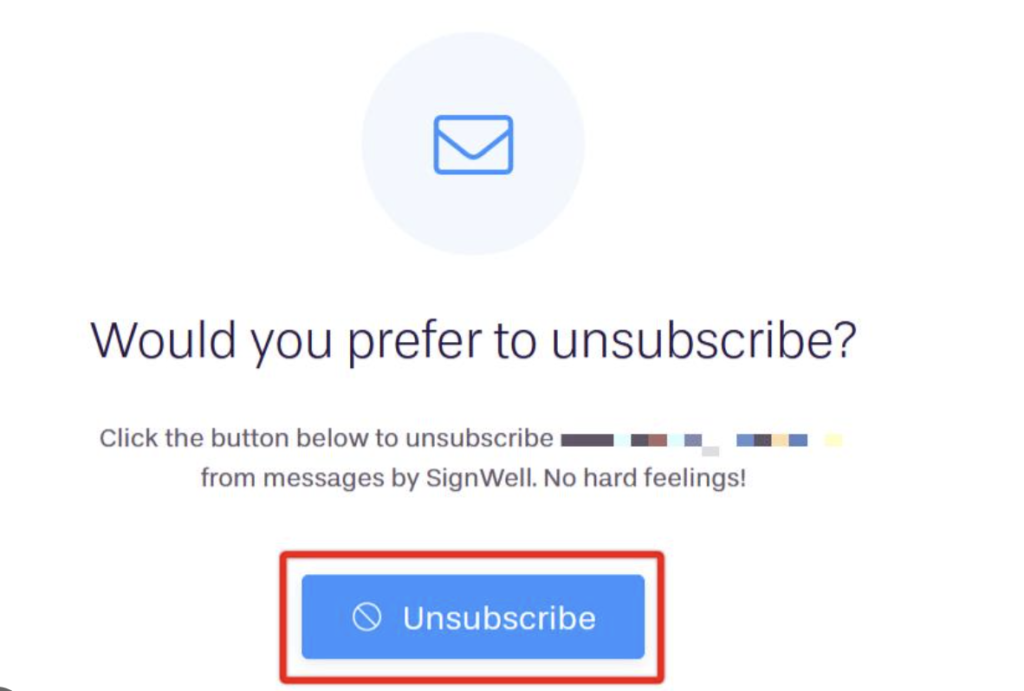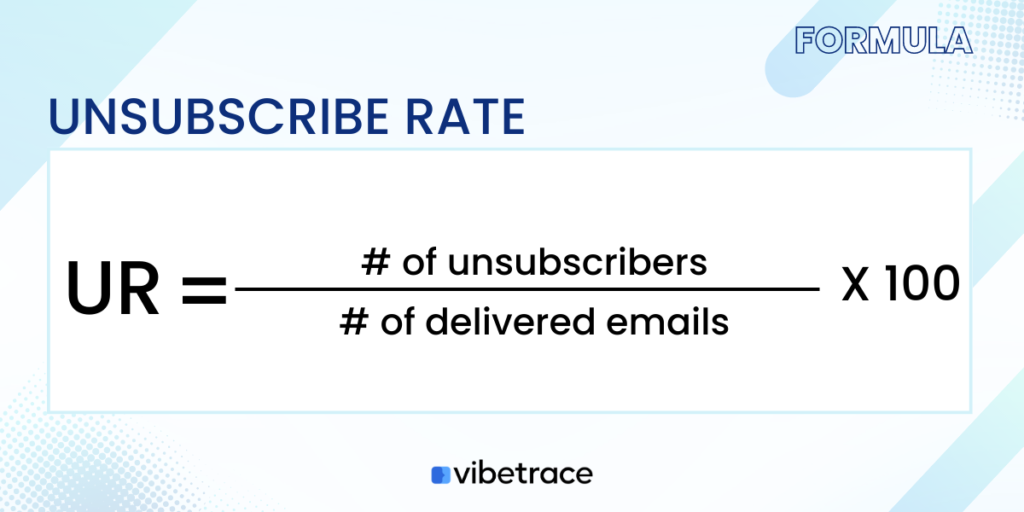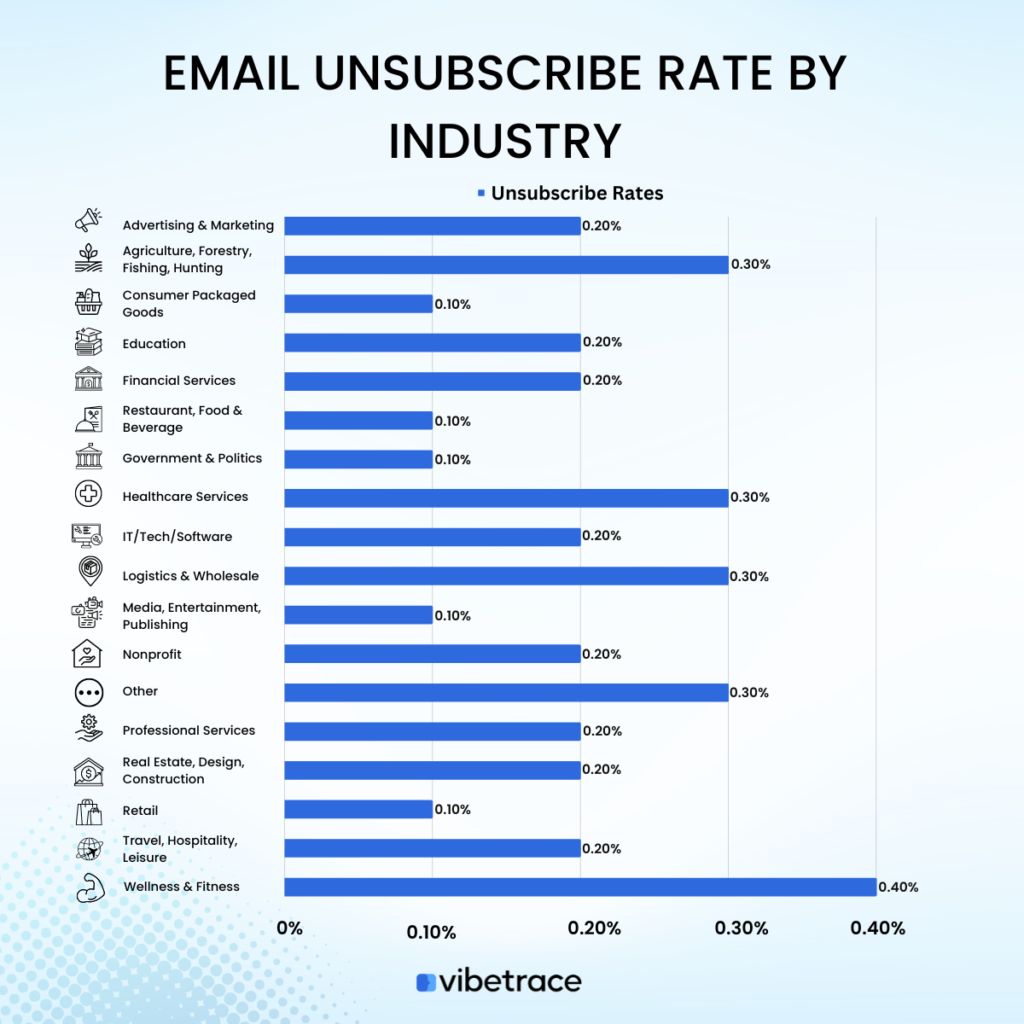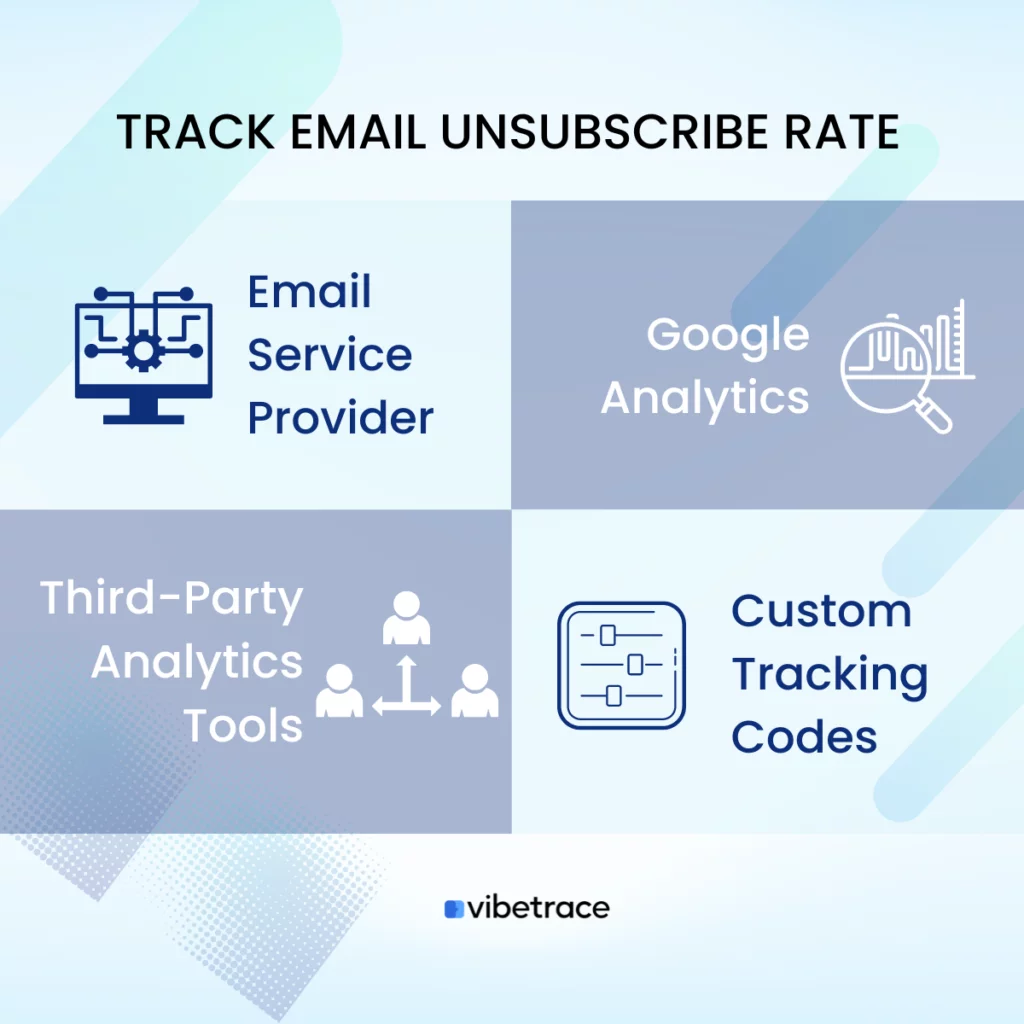The email unsubscribe rate is a key metric that provides insights into the reasons subscribers are leaving and ways to potentially win them back.
While some marketers prioritize gaining new subscribers over retaining current ones, monitoring the unsubscribe rate is crucial for improving email marketing campaigns.
By identifying the reasons why subscribers are leaving, businesses can make necessary improvements to retain them.
Additionally, although a high unsubscribe rate can negatively impact a business, it can also highlight areas of opportunity for improvement.
What is Email Unsubscribe Rate?
Definition of Email Unsubscribe Rate
Email unsubscribe rate refers to the percentage of people who choose to stop receiving emails from a particular sender or mailing list.
Email unsubscribe rate is an important metric in email marketing because it can indicate a variety of factors, such as the relevancy of the content being sent, the frequency of emails being sent, or the quality of the email list.
If a high percentage of subscribers are unsubscribing, it may indicate that they are no longer interested in the content being sent, or that the frequency of emails is too high, or that the content is not relevant to them.

In general, a low email unsubscribe rate is desirable, as it indicates that the content is resonating with subscribers and that they are engaged with the sender.
However, it is also important to keep in mind that some unsubscribes are natural and to be expected.
Particularly if the sender is periodically cleaning up their email list or if a subscriber’s circumstances change (such as a change in job or email address).
Email Unsubscribe Rate Formula

To calculate the email unsubscribe rate, you need to determine the number of unsubscribes and the number of emails sent during a specific time period, such as a week, month, or year. You can then use this formula to calculate the unsubscribe rate as a percentage of the total number of emails sent during that time period.
Email Unsubscribe Rate by Industry
The following shows the email unsubscribe rate by Industry:

| Industry | Unsubscribe Rates |
| Advertising & Marketing | 0.20% |
| Agriculture, Forestry, Fishing, Hunting | 0.30% |
| Consumer Packaged Goods | 0.10% |
| Education | 0.20% |
| Financial Services | 0.20% |
| Restaurant, Food & Beverage | 0.10% |
| Government & Politics | 0.10% |
| Healthcare Services | 0.30% |
| IT/Tech/Software | 0.20% |
| Logistics & Wholesale | 0.30% |
| Media, Entertainment, Publishing | 0.10% |
| Nonprofit | 0.20% |
| Other | 0.30% |
| Professional Services | 0.20% |
| Real Estate, Design, Construction | 0.20% |
| Retail | 0.10% |
| Travel, Hospitality, Leisure | 0.20% |
| Wellness & Fitness | 0.40% |
The email unsubscribe rates vary by industry, according to a report by Campaign Monitor. The industry with the lowest unsubscribe rate is Consumer Packaged Goods at 0.10%, followed by Media, Entertainment, and Publishing, and Restaurant, Food & Beverage, all at 0.10%.
On the other hand, the industry with the highest unsubscribe rate is Wellness & Fitness, with a rate of 0.40%. Other industries with relatively high unsubscribe rates include Healthcare Services and Logistics & Wholesale, both at 0.30%.
While the reasons behind these variances are not entirely clear, businesses in industries with high unsubscribe rates may want to focus on improving the relevance and quality of their email content to better engage their subscribers and reduce churn.
How to track Email Unsubscribe Rate?
There are several tools and platforms that you can use to track email unsubscribe rates. Here are a few popular options:

Email Service Provider (ESP) Analytics: The majority of email service providers offer data that include unsubscribe rates. These tools make it simple to monitor unsubscribe rates and other key email analytics.
Google Analytics: You can also track email unsubscribe rates with Google Analytics by creating a conversion target that tracks when someone hits the unsubscribe link in your email. This will show you the number of unsubscribes and allow you to calculate your unsubscribe rate.
Third-Party Analytics Tools: Many third-party analytics tools are available that can be integrated with your email marketing program to provide more detailed data.
Custom Tracking Codes: You may also develop unique tracking codes for your unsubscribe link and track clicks on it with a program like Google Tag Manager. This will show you the number of unsubscribes and allow you to calculate your unsubscribe rate.
No matter which tool you use, it’s important to track your email unsubscribe rate regularly and use the insights gained to adjust your email marketing strategy as needed.
How often should you check Email Unsubscribe Rate?
The frequency of checking your email unsubscribe rate depends on your email marketing goals and the volume of your email campaigns. However, it is generally recommended to monitor your unsubscribe rate regularly, such as weekly or monthly.
Regularly monitoring your unsubscribe rate can help you identify any issues with your email campaigns and take appropriate actions to address them. It can also help you track the effectiveness of your email marketing strategies and make adjustments as needed to improve your email engagement rates.
Email Unsubscribe Rate Calculator
Do you want to calculate your email unsubscribe rate? Use our simple calculator below.
Simple Email Unsubscribe Calculator
Email Unsubscribe Rate Optimization
Optimizing your email unsubscribe rate is an essential part of a successful email marketing strategy. Here are some tips to help you improve your email unsubscribe rate:
Write valuable content: Make sure that the content of your emails is relevant, engaging, and valuable to your subscribers. This can help keep them interested and engaged, and less likely to unsubscribe.
Set clear expectations: Set clear expectations about the type, frequency, and content of your emails when subscribers sign up. This can help manage their expectations and reduce the chances of them unsubscribing due to receiving unexpected content or frequency.
Segment your email list: Segmenting your email list based on subscriber interests, preferences, and behavior can help ensure that each email they receive is relevant and valuable to them, reducing the likelihood of them unsubscribing.
Optimize email frequency: Pay attention to the frequency of your emails and adjust it as needed. Sending too many emails can overwhelm your subscribers, while sending too few emails may result in them forgetting about your brand.
Make unsubscribing easy: While it may seem counterintuitive, making it easy for subscribers to unsubscribe can actually improve your overall email engagement rates. By providing a clear and easy-to-find unsubscribe link, you can avoid frustrating subscribers who may otherwise mark your emails as spam.
By following these tips, you can help reduce your email unsubscribe rate and improve the overall effectiveness of your email marketing campaigns.
Important Things about Email Unsubscribe Rate
Here are some important things to keep in mind about email unsubscribe rate:
Offer insights on the effectiveness of campaigns: Email unsubscribe rate is an important metric that measures the percentage of subscribers who opt-out or unsubscribe from your email list. It can provide insights into the effectiveness of your email marketing strategy, as well as the overall health of your email list.
Regular monitoring is required to identify trends and patterns: Monitoring your email unsubscribe rate on a regular basis might help you find trends and patterns that can help you improve your email marketing strategy. For example, a rapid increase in your unsubscribe rate could indicate that your subscribers are receiving irrelevant or low-quality information.
Impact deliverability: A high unsubscribe rate can harm your email deliverability. If a large percentage of subscribers flag your emails as spam or unsubscribe, it can convey a signal to email providers that your emails are undesired, resulting in their being forwarded to the spam folder.
Important to respect subscriber preferences: Respecting subscriber preferences is essential to maintaining a healthy email list and reducing your unsubscribe rate. Make sure to only send relevant and valuable content that subscribers have opted in to receive, and make it easy for them to unsubscribe if they no longer wish to receive your emails.
Doesn’t always mean a bad thing: While a high unsubscribe rate can be worrying, keep in mind that not all unsubscribes are negative. Subscribers may have simply lost interest in some circumstances, or their demands may have changed. You can assist attract and maintain subscribers who are truly interested in your brand by focusing on offering valuable and entertaining content.
Metrics related to Email Unsubscribe Rate
Here are some metrics related to Email unsubscribe rates:
Churn Rate
The percentage of customers who stop using a product or service over a given time period.
Spam Complaint Rate
The number of recipients who marked the email as spam, divided by the number of emails delivered.
Vibetrace is an email marketing automation platform that provides a range of features that can help you improve your unsubscribe rate.
Vibetrace’s advanced segmentation and personalization capabilities, dynamic content, A/B testing, unsubscribe management features, and real-time analytics can help you improve your email unsubscribe rate and build more meaningful relationships with your subscribers.
Sign up for our email list today and unlock the full potential of your campaigns!

